Improving the Australian Poll Gene Marker Test
Did you know a new genetic test for the poll trait can help eliminate the need for de-horning?
| Project start date: | 01 July 2017 |
| Project end date: | 25 March 2020 |
| Publication date: | 24 April 2020 |
| Project status: | Completed |
| Livestock species: | Grassfed cattle, Grainfed cattle |
| Relevant regions: | National |
|
Download Report
(3 MB)
|
|
Summary
Currently, tests for poll genes in cattle are not widely adopted. There is uncertainty about the effect of the scur gene and the assumption that polledness is associated with inferior genetics for reproductive traits.
This project investigated the tests available for analysing the poll gene across common beef breeds in Australia to develop an optimised poll test (OPT). Research also analysed genetic markers associated with scurs and determined whether there are negative effects of the poll gene on reproductive performance.
The OPT developed in this project has increased the efficiency of poll prediction by 9% and has a commercial poll testing success rate of 99.42%. Results confirmed that polledness will have no detrimental effects on herd productivity or reproductive performance.
Objectives
The primary objective of this project was to develop an improved poll test suitable for future large-scale herd analysis. This would provide a cost-effective and reliable method to accurately assess the poll status and its impact on all major cattle breeds in Australia.
Key findings
-
The new OPT increased the poll prediction efficiencies from 90.31% to 99.6% and has a commercial poll testing success rate of 99.42%.
-
This study confirmed that there is no significant difference in fertility or other traits in polled versus horned animals, therefore, polledness should not be considered detrimental to breeding objectives.
-
Although scurs remain poorly understood, data shows it is predominantly observed in animals with higher genetic variation and is more likely to occur in males than females.
-
Results indicate if polled animals are selected over a few generations, scurs and horns will decline in the herd.
-
Results confirmed that polledness will have no detrimental effects on herd productivity. However, care must be taken to limit inbreeding in herds that have a lower number of polled animals.
Benefits to industry
Outcomes of this project could significantly reduce costs of production associated with horned herds, including:
-
minimising production costs from dehorning and disbudding (around $10/head)
-
eliminating post-treatment calf losses
-
reducing animal and handler welfare risk
-
improving hide and meat quality.
There are clear social (handler and animal welfare) and economic (reduced calf mortality, reduced labour costs) benefits from breeding naturally polled herds.
MLA action
The outcomes of this project have been implemented into commercial tests available for industry use. The project's results have also been contributed to the assessment and setting of key performance indicators on polled status in the Beef Sustainability Framework.
MLA is helping producers improve the genetic polled status of their herds by distributing the project results through several adoption initiatives, including:
Future research
The industry's understanding of scurs genetics remains limited. While the project was unable to identify markers that are predictive of scurs, new insights from this project suggest that scurs development is influenced by a complex pathway involving non-genetic and genetic factors. This area requires significant more research to improve the genetic performance of cattle in Australia.
More information
| Contact email: | reports@mla.com.au |
| Primary researcher: | University of Queensland |


